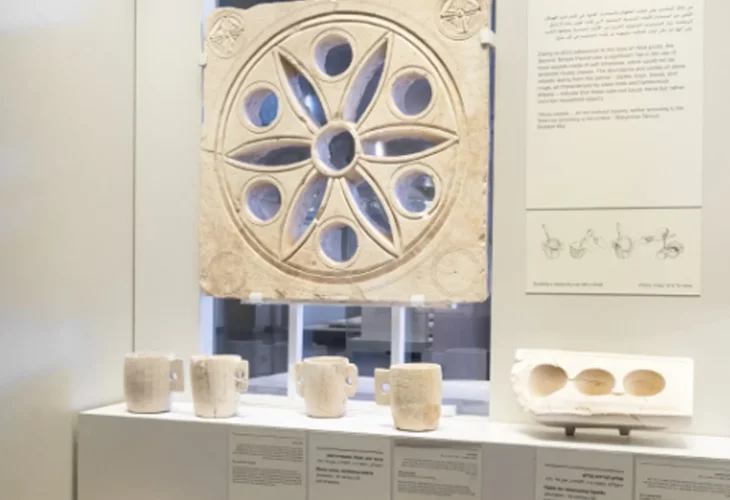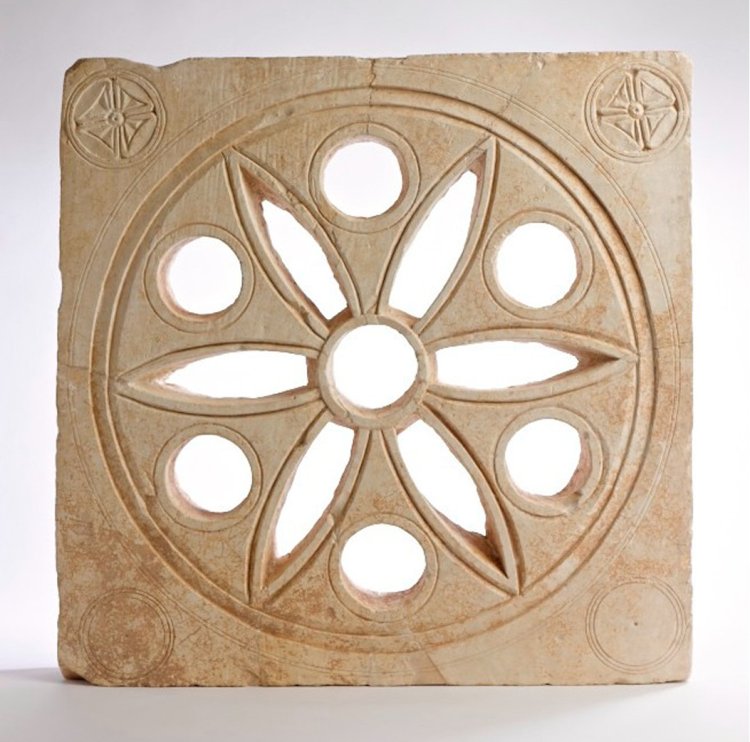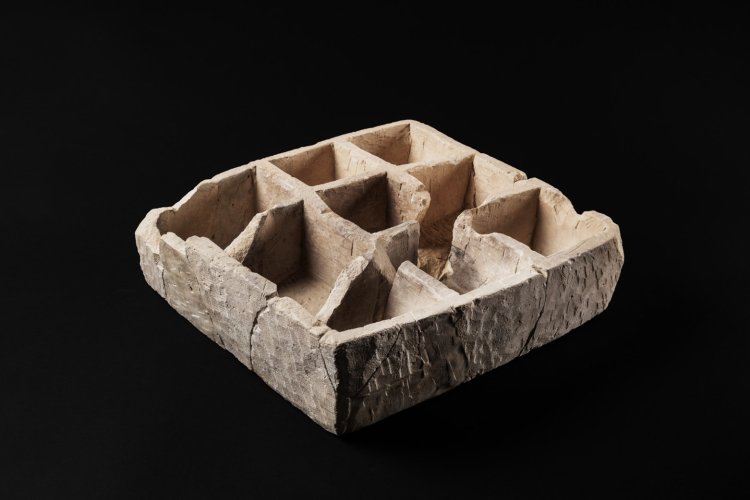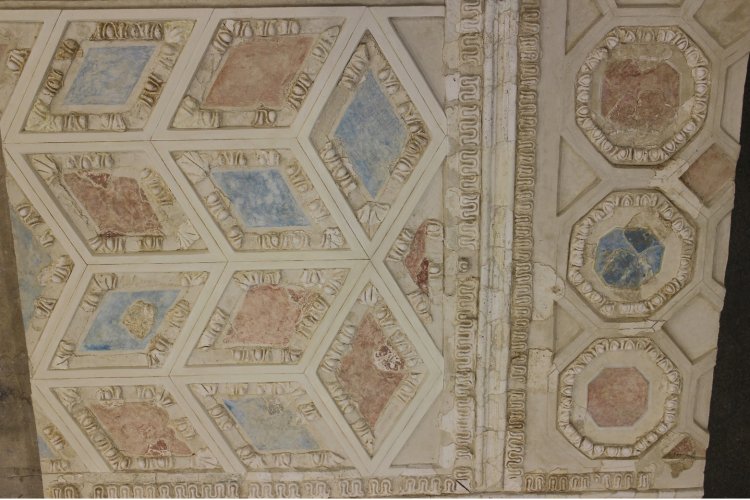Unveiling Ancient Jerusalem: Rare Finds from the Second Temple Era
Discover the stunning artifacts from Jerusalem’s luxurious homes – chandeliers and exquisite stoneware – now part of the Israel Museum's new exhibit. Senior curator Dudi Mevorach shares the fascinating finds, spotlighting a rare stone box unearthed recently in the City of David.
 Display of stone implements from Second Temple Jerusalem (Photos: Israel Museum Jerusalem, Zohar Shmush).
Display of stone implements from Second Temple Jerusalem (Photos: Israel Museum Jerusalem, Zohar Shmush)."No, we're not entirely sure what the unique box was used for," says Dudi Mevorach, a senior curator at the Israel Museum's archaeology department, speaking about the rare stone box recently unearthed.
This revelation is quite surprising since Mevorach's role at the museum involves extensive research on archaeological items. However, it turns out that archaeological findings sometimes present many unanswered questions, some of which may remain mysteries forever. Such is the case with the stone box found by the Israel Antiquities Authority excavations led by Ari Levy and Yuval Baruch in the City of David, now displayed at the museum.
Mevorach describes the rare find: "This is a square box measuring 30 by 30 centimeters, made of soft limestone. It contains nine compartments and was discovered on the stepped street leading to the Temple Mount, within the remains of a building likely used as a shop. The box dates back to the Second Temple era, around two thousand years ago, and we are excited to showcase it in the museum's permanent exhibition."
 Stone window from Herod's palace in Herodium
Stone window from Herod's palace in HerodiumMessages from the Second Temple Days
Discussing the exhibition, Mevorach explains: "The archaeology gallery is organized chronologically by period, including a section with finds from the Second Temple period. We constantly juggle decisions on displayed materials, as there are countless intriguing artifacts. Space is limited, so we must occasionally choose which items stay and which make room for new discoveries, just as we have recently re-curated this exhibit."
Can you give examples of items on display?
"One special exhibit is a stucco ceiling fragment from Herod's royal throne room in Jericho. We reconstructed it from hundreds of fragments found during Prof. Ehud Netzer's excavations, pieced together in our conservation labs. It's a challenging task, especially with such precise geometric designs typical of luxurious buildings from that period, modeled on the latest Roman fashions. Yet, Jerusalem and Judea's residents were careful not to include figures or images of animals or humans in their art.
"The exhibition also includes two 'multi-wick lamps'—chandeliers intended to illuminate large spaces, typically public buildings or grand halls. Additionally, we display decorated wall sections in 'fresco'—plaster painted with various colorful designs—a Roman interior decoration trend that Herod introduced to his palaces, emulated by Jerusalem's wealthy."
 Unknown use: Nine-compartment stone box
Unknown use: Nine-compartment stone boxAre all the findings from the same place?
"No. The fresco findings were discovered in Jerusalem's Upper City, now known as the Jewish Quarter. During the late Second Temple period, this was considered the 'Wealthy Quarter,' home to affluent individuals in luxurious houses, including some priests. The stone tools were sourced from all over the city, reflecting its story. The fact that the Temple was there required meticulous adherence to purity laws. Stone is particularly notable because, unlike pottery or metal utensils, it does not contract impurity."
Mevorach emphasizes: "We're displaying the material culture left by Jerusalem's Second Temple residents, from architecture to everyday utensils and luxurious items. But truly, we aim to reflect the people behind these findings—the city's inhabitants, their lives, tendencies, and beliefs. These artifacts show a culture influenced by Western—Greek and Roman—traditions, trying to emulate them, while strictly adhering to Jewish law."
Never-ending Excavations
Here, Mevorach addresses the unique box found on the street leading to the Temple Mount. "These streets likely had many shops serving city dwellers and many pilgrims visiting. Among the artifacts, there are numerous stone tools, typically plates, cups, and trays, as well as unique items, including liquid measuring tables. We display one here. These tables were market control aids, enabling precise measurements to ensure traders didn't 'cheat' on liquid quantities sold."
And why can't we determine the box's purpose?
"There are several theories, with no way to settle them definitively. Yet, the fact that it's stone likely connects to something requiring purity, although we're unsure what each of the nine compartments contained—perhaps pilgrim-bought perfumes or incense for the Temple, or maybe varieties of food or spices. We don't know, and probably never will, but what's clear is that this is the largest compartment box ever found."
For those imagining the box as seen in the photos, Mevorach clarifies: "The box was found in many broken pieces, with some parts missing. The fragments were transported from the excavation to the Israel Museum's conservation lab, where they underwent preservation and restoration under Victor Uziel’s skilled hands. This is a specialty of our conservation labs, known for taking broken finds directly from the site and preparing them for display."
 Stucco ceiling segment from Herod's royal chamber in Jericho
Stucco ceiling segment from Herod's royal chamber in JerichoAfter uncovering so many finds, do you think there are still new items for future displays?
"The beauty of archaeology is its constant revelation of new finds, teaching us about the unknown. Excavations in Jerusalem are continuous, uncovering new structures, intriguing tools, and inscriptions revealing past life. Some finds even make us reassess historical events and breathe new understanding into our interpretations. It’s a work full of surprises, where you never know what to expect. That’s why we periodically change the exhibit, showcasing particularly fascinating new items."
And where do the items removed from the exhibit go?
"Most items in our exhibit are borrowed from the Israel Antiquities Authority, belonging to the State of Israel. They reside in state treasures, which we borrow for various lengths of time before returning them."
(Images courtesy of Israel Museum Jerusalem, and Zohar Shmush)

